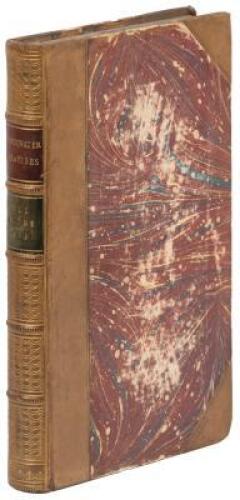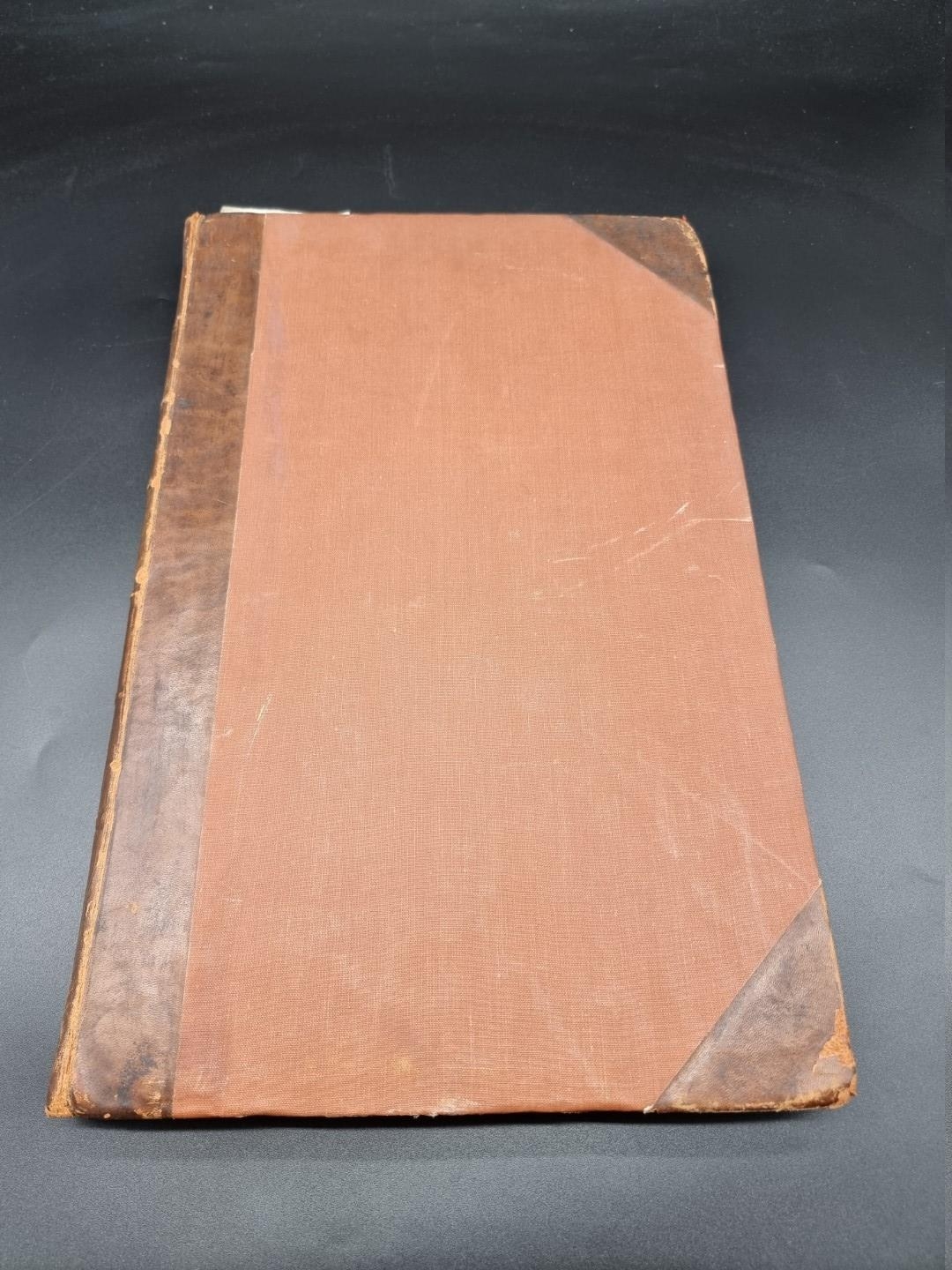The Nervous System of the Human Body, Embracing the papers delivered to the Royal Society on the subject of the nerves. [Bound together with] On The Nerves, giving a view of their structure and arrangement.... The Philosophical Transactions1821, On The Nerves Which Associate the Muscles of the chest..... The Philosophical Transactions 1822, On the Motions Of The Eye in illustration of the uses of the muscles and Nerves of the Orbit, The Philosophical Transactions 1823, On The Nervous Circle Which Connects with the Voluntary Muscles with the Brain, The Philosophical Transactions, Appendix, containing cases and letters on Nervous Deseases submitted to the Author, with 9 plates to the rear each with index, original full leather with professional repair to spine, recent end papers, with hand writted dedication to front paper,
Sir Charles Bell (12 November 1774 – 28 April 18, 42) was a Scottish surgeon, anatomist, physiologist, neurologist, artist, and philosophical theologian. He is known for his groundbreaking work in neurology, particularly his discovery of the distinction between sensory and motor nerves in the spinal cord, and for his description of Bell's palsy.
Born in Edinburgh, Bell was the fourth son of the Reverend William Bell a clergyman of the Episcopal Church of Scotland. After his father's death in 1779, his mother played a pivotal role in his early education. Bell pursued medical studies at the University of Edinburgh, where he was profoundly influenced by his elder brother, John Bell a prominent surgeon and anatomist. This mentorship fostered Bell's dual passions for medicine and art, leading him to produce detailed anatomical illustrations that would later enhance his scientific publications.
In 1804, Bell relocated to London, where he established a private surgical practice and lectured on anatomy. His 1811 publication, "New Idea of Anatomy of the Brain," marked a significant advancement in neurological science. In this work, Bell proposed that different nerve fibers have specific functions, a concept that laid the foundation for understanding the functional differentiation within the nervous system.
Perhaps Bell's most influential work, "The Nervous System of the Human Body," was published in 1830. This comprehensive volume compiled his research and lectures on neurology, offering detailed insights into the anatomy and physiology of the nervous system. The book includes illustrated plates many of which Bell illustrated.
Among Bell's notable contributions is the identification of the facial nerve's role in unilateral facial paralysis, a condition now known as Bell's palsy. His observations on this condition were instrumental in advancing the understanding of cranial nerve functions and their clinical implications.
In recognition of his scientific achievements, Bell was awarded the Royal Medal in 1829 and was knighted in 1831. He continued his academic career as a professor of surgery at the University of Edinburgh from 1836 until his death in 1842.
The Nervous System of the Human Body, Embracing the papers delivered to the Royal Society on the subject of the nerves. [Bound together with] On The Nerves, giving a view of their structure and arrangement.... The Philosophical Transactions1821, On The Nerves Which Associate the Muscles of the chest..... The Philosophical Transactions 1822, On the Motions Of The Eye in illustration of the uses of the muscles and Nerves of the Orbit, The Philosophical Transactions 1823, On The Nervous Circle Which Connects with the Voluntary Muscles with the Brain, The Philosophical Transactions, Appendix, containing cases and letters on Nervous Deseases submitted to the Author, with 9 plates to the rear each with index, original full leather with professional repair to spine, recent end papers, with hand writted dedication to front paper,
Sir Charles Bell (12 November 1774 – 28 April 18, 42) was a Scottish surgeon, anatomist, physiologist, neurologist, artist, and philosophical theologian. He is known for his groundbreaking work in neurology, particularly his discovery of the distinction between sensory and motor nerves in the spinal cord, and for his description of Bell's palsy.
Born in Edinburgh, Bell was the fourth son of the Reverend William Bell a clergyman of the Episcopal Church of Scotland. After his father's death in 1779, his mother played a pivotal role in his early education. Bell pursued medical studies at the University of Edinburgh, where he was profoundly influenced by his elder brother, John Bell a prominent surgeon and anatomist. This mentorship fostered Bell's dual passions for medicine and art, leading him to produce detailed anatomical illustrations that would later enhance his scientific publications.
In 1804, Bell relocated to London, where he established a private surgical practice and lectured on anatomy. His 1811 publication, "New Idea of Anatomy of the Brain," marked a significant advancement in neurological science. In this work, Bell proposed that different nerve fibers have specific functions, a concept that laid the foundation for understanding the functional differentiation within the nervous system.
Perhaps Bell's most influential work, "The Nervous System of the Human Body," was published in 1830. This comprehensive volume compiled his research and lectures on neurology, offering detailed insights into the anatomy and physiology of the nervous system. The book includes illustrated plates many of which Bell illustrated.
Among Bell's notable contributions is the identification of the facial nerve's role in unilateral facial paralysis, a condition now known as Bell's palsy. His observations on this condition were instrumental in advancing the understanding of cranial nerve functions and their clinical implications.
In recognition of his scientific achievements, Bell was awarded the Royal Medal in 1829 and was knighted in 1831. He continued his academic career as a professor of surgery at the University of Edinburgh from 1836 until his death in 1842.















Testen Sie LotSearch und seine Premium-Features 7 Tage - ohne Kosten!
Lassen Sie sich automatisch über neue Objekte in kommenden Auktionen benachrichtigen.
Suchauftrag anlegen